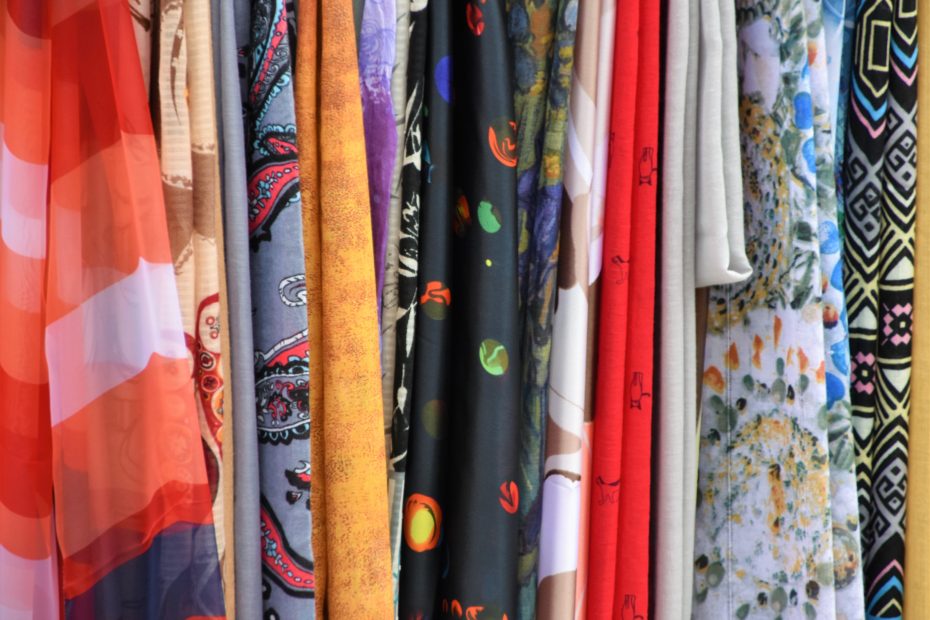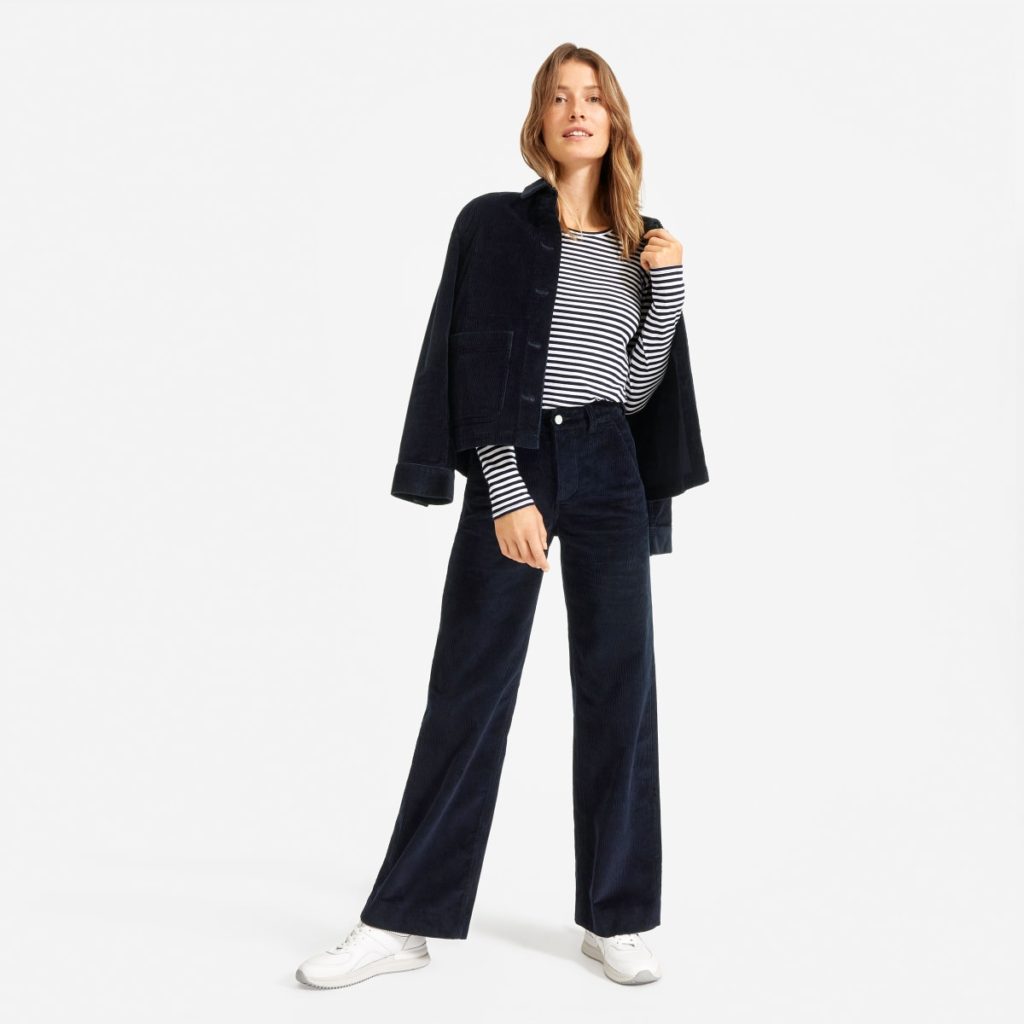With Singapore’s summer all year round, I am sure many of us are still looking for that perfect material to keep us cool and composed. We are currently in the warmest months of April and May but arguably, what makes Singapore so hot is the high humidity levels. Did you know Singapore’s average annual relative humidity (the ratio of highest absolute humidity against the current absolute humidity) is 83.9%? This is extremely higher than the typical comfortable humidity level of 30-50%. Meaning, warm moisture stays on our skin longer, making us feel even hotter.
To brave the Singapore weather, let us introduce you to these 4 underrated materials, Rayon, Corduroy, Linen, and Denim. Some may not usually be your go-to material for the especially warm and humid tropical weather. Most of the brands and items below can be found on the Shopform app, download and shop if anything catches your eye!
1. What is Rayon?
24% of the rayon produced in the world today is from India, who is by far the largest manufacturer. Rayon is the first manufactured fiber. However, because it is derived from cellulose, it is considered a “semi-synthetic” material.
In a nutshell, rayon is made from natural sources of regenerated cellulose, such as wood and related agricultural products. Viscose rayon is the most common type of rayon. It gives clothing a soft, flowy look, and has properties similar to cotton. It’s breathable, moisture-absorbent, and a popular choice for casual and athletic wear! Since it is so comfortable and easy to wear, it is an especially good fabric for sportswear/ athleisure and summer dresses.
Wearing Rayon In the Summer
Often dubbed as “Summer’s Magical Fabric”, the material is extremely comfortable and breathable. It feels cool to the touch and has a soft, silky texture. Unlike cotton, rayon wicks sweat away from the skin, leaving us feeling drier on hot days. It is also often used as a silk alternative, hence draping beautifully on your figure. We love that it is naturally wrinkle-resistant, relieving us of the dreadful chores that we wouldn’t want to do on a scorching summer day anyway.
Stylist’s Tip: “Light-colored garments in white, cream & pastels don’t absorb sunlight like dark colors do. Wear them to stay cool.”
Stitch Fix
Taking Care of Rayon
Although a cooling material to wear, caring for it requires more consideration. Rayon is blended with other fabrics (such as polyester and cotton). Never use hot water, and hand wash if possible. On machine settings, set it to delicate wash. For extra help and tips, check out our previous blog post on how to read care labels!
Is Rayon Sustainable?
However, if you are trying to be sustainable (take our quiz here!), it is important to note that viscose rayon may not be the most eco-friendly material. Although it is made from plants, toxic production and the deforestation are associated with it.
Consider rayon voile, a light fabric made of 100% rayon made from wood pulp and other agricultural products. This is exactly what slow fashion brand Whispers and Anarchy uses, where they only use natural fabrics as they are kinder to the skin and are also biodegradable!
2. What is Corduroy?
Corduroy is a truly vintage textile of cotton. The word corduroy was coined in England in the late 18th Century. It is an early form of branding using the French translation of ‘cloth of the King’ (corde du roi). This is perhaps to promote an image of royal quality. The corduroy material is most commonly used to make long pants.
Corduroy is a rigid fabric, usually derived from cotton. Its distinct patterns are woven and cut into what are called ‘cords’ or ‘wales’. The width of the cord is also the size of the wale. The lower the wale number, the thicker the width of the wale. Typically, colours of corduroy reflect fall or winter seasons, such as brown, tan, olive, khaki, sand, black, and navy.
Wearing Corduroy In the Summer
When we talk about corduroy, we often picture the wide wale variety.
An example of wide wale corduroy is the Everlane wide-leg pants, made of eight-wale corduroy. This means the texture is visibly wider and softer than that of our average cords—and a whole lot cuter.
However, the mere thought of a thick material in summertime causes us to break out in a sweat. Instead, what the warm summer weather requires is a narrow wale needlecord, which provides a note of texture while remaining light enough to ensure comfort in higher temperatures.
Our tip: For summer, we suggest switching things up with brighter and more vibrant colours like red, burgundy mustard yellow, and bright green!
Here’s an example of a narrow wale needlecord skirt. To look more at home during the summer, pair a corduroy skirt with a crop top and sandals. You will feel more comfortable and less stuffy compared to its pants counterpart.
Taking Care of Corduroy
When it comes to caring for corduroy, the most important thing is to wash the clothing inside out. This prevents the ribbed side from getting matted and reduce fading. For a deeper clean, wash it with hot water. Maintenance will vary by garment, so be sure to check the care label for specific instructions.
Is Corduroy Sustainable?
Corduroy is sustainable when made with organic cotton and unsustainable when made with non-organic cotton or polyester blend. Do check the labels from the brands you purchase from carefully if you’re concerned about sustainability and being eco-friendly!
3. What is Linen?
Linen is definitely no stranger to us in Southeast Asia! It is an extremely strong and lightweight fabric made from the flax plant.
Linen is a natural fiber, like cotton, but it takes longer to harvest and make into fabric, as flax fibers can be difficult to weave. Extracted from plants, storing it for a long period of time softens the fibers. Linen is a common material for towels, tablecloths, napkins, and bedsheets.
Fun fact: The term “linens” also refers to household items, though they are not always made out of linen fabric.
Wearing Linen In the Summer
The linen textile dries at a much faster rate than cotton. Because of its porous nature, linen has natural heat and moisture-wicking properties. This keeps you cool and is a popular fabric to use for clothing or bedding in the summer. Linen’s natural fibers also hold dye colors better than some other materials, and thus the fabric is available in almost any imaginable color!
Taking Care of Linen
Linen does have a few downsides as well when it comes to maintenance. As a fabric, it has little elasticity so it can wrinkle quite a bit. Wash linen fabrics in a separate load from other types of fabrics. When using a household or commercial washing machine, keep the water temperatures no hotter than lukewarm, but preferably cold! Hot water may cause linen fabric to shrink or may weaken the fibers.
Stylist Tip: “Wrinkles are part of the carefree, lived-in beauty of linen. Hate to iron? Lightly spray your garment with a water bottle and smooth over wrinkles with your hand.”
Stitch Fix
Is Linen Sustainable?
Great news to sustainability enthusiasts! Linen is one of the most biodegradable and stylish fabrics in fashion history. It is strong, naturally moth resistant, and made from flax plant fibres. It’s amazing that when untreated, it is fully biodegradable. Because of its beautiful natural colours, such as ivory, ecru, tan, and grey, sometimes it doesn’t even have to be treated!
4. What is Denim?
I’m sure we are all familiar with this material, and we definitely have a few denim staples in our wardrobes. In short, denim is a twill fabric. Twill fabric is yarn packed very closely together, to give us strong, thick fabric. This heavyweight weave is perfect for pants, jeans, and jackets – which explains why denim jackets and jeans are such a trend! Denim jeans are a seasonless staple, with a few particular denim trends that just hit harder in the summertime.
Fun fact: A special characteristic of denim is that there is diagonal ribbing visible on the face of the fabric, which sets it apart from other cotton fabric.
Wearing Denim in Summer
This year, longer denim skirts are in trend and the original ultra-short cutoffs are feeling more and more obsolete. The styling possibilities are endless when it comes to this particular summer denim material. Pair it with a cute ruffled crop top in a fun colour plus slip-on flats or easy, comfortable mule heels to complete your summer look.
Taking Care of Denim
I’m sure we’ve heard endless tales of people saying: DO NOT wash your denim! Well.. they’re right. Putting your dark denim in the machine is only going to cause it to fade fast. With distressed denim, it is already a bit vulnerable, so the tumbling and rubbing action is only going to promote fraying. To freshen up your denim pieces, we suggest throwing it in the dryer on low. The heat kills any odour-causing bacteria. If you really have to wash it, put it in the machine on a cold, gentle cycle.
Is Denim Sustainable?
On the surface, denim is far from being a sustainable textile in the production of clothes. A single pair of traditionally-made jeans requires large amounts of chemicals, thousands of litres of water and high energy consumption.
However, denim is still one of the easiest things to come by in a second-hand market, and they are usually in great condition! This really shows its durability as a material. Hence, to remain sustainable, it is best to shop within the circular economy, prolonging the life of garments and keeping them out of landfills.
To sum it up
Overall, the hot weather in Singapore gives us a lot of considerations to take into account when buying clothes. Different materials provide different comfort levels and styles to match with. Our takeaway is that: rayon voile, organic cotton corduroy, and linen are some of the most sustainable and underrated materials to look out for during the summertime. Even traditionally ‘hotter’ materials like corduroy and denim can be tweaked to suit Singapore’s weather!
What are some of your summer staples? Let us know in the comments!

